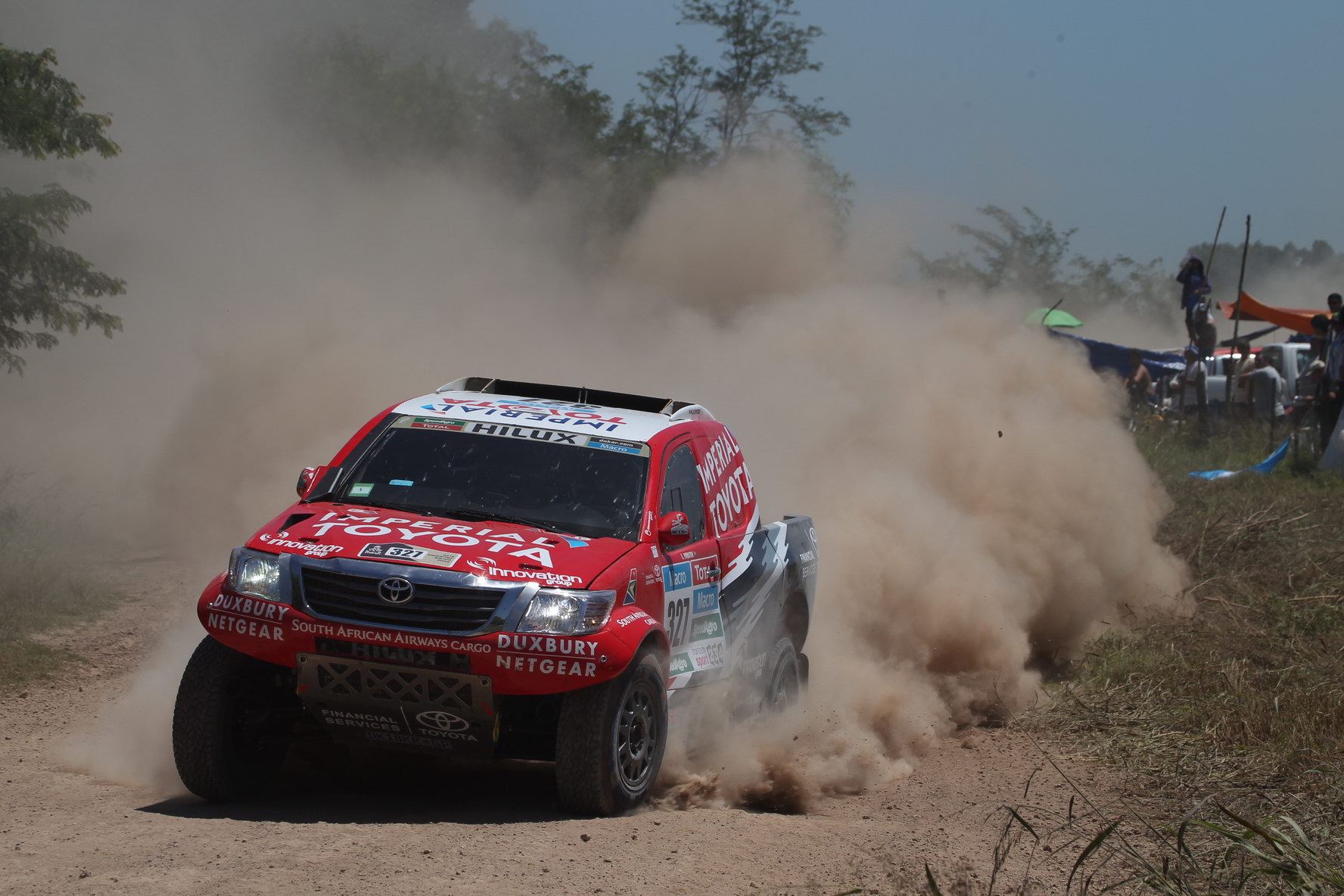The First Day of the Dakar was Just Warming-up. Drivers Tested Basic Capabilities of Machines.
Competitors left BUENOS AIRES heading for VILLA CARLOS PAZ, a well-known summer resort. On the way, they ran the 170-km SS (Special Stage) over ranch roads. The hardpan surface allows drivers to gather speed, but there are a number of right angle turns that can send vehicles off course or even cause a rollover.
The average speed of the top teams is 140 km. GINIEL DE VILLIERS (IMPERIAL TOYOTA) reached the finish line in third place, 50 sec. behind the top driver. GINIEL said, "I am getting very good vibes that the HILUX has improved. Today's route did not really allow the competitors to differentiate themselves, so I am looking forward to the rest of the running starting tomorrow." The other HILUX drivers made a respectable start, finishing 6th, 11th, 14th, 15th and 16th. YAZEED ALRAJHI (YAZEED RACING), who is participating in the Dakar for the first time, performed with restraint, finishing 20th. He will gradually adjust to the new machine.
In the Production Category, the LandCruiser200 of TEAM LAND CRUISER made a good start with a one-two finish. NICOLAS GIBON, 1st in the category, proceeded cautiously and simply, accelerating, braking and steering. The basic capabilities of a production car are particularly important for running a course that requires repeated sudden braking. The LandCruiser200 responsibly met the drivers' high requirements.
As each of the vehicles reached the finish line and headed for the bivouac, they were enthusiastically welcomed by a throng of spectators at the entrance. Tomorrow's route features a variety of conditions including hardpan, soft sand and a dusty road. The SS is long, 518 km. It will be a tough day.

How Do Machines Get Cleaned?
After running all day, machines return to the bivouac covered with dust and mud. They need to be washed so that mechanics can work on them easily. Of course, there are no permanent car washing stations, so how do they get washed? Sometimes they get washed at gas stations in the middle of Liaison Sections. Sometimes residents along the road let drivers use water and hose in front of their homes. Some bivouacs have large basic washing stations. Mechanics are happy to see these and as soon as the vehicles return to the bivouac, they rush to wash them in turn.
For the DAKAR mechanics, washing vehicles is the first maintenance they perform. A thorough washing makes it easy to spot any problems with the machines. After washing, full-scale maintenance is conducted to get ready for the following day.